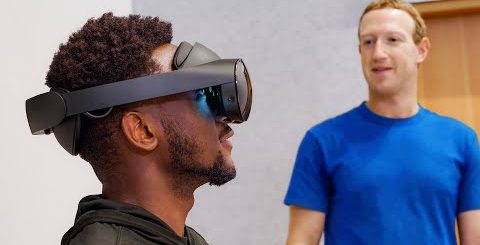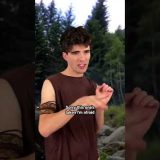Seeing The Universe Like We’ve Never Seen It Before
Now that the James Webb Space Telescope has released its first images, it’s time for the science programs to begin.
We meet 5 scientists who will be using the telescope during its first cycle of operations looking at the earliest galaxies, red giant stars in the disc of Andromeda, star forming regions in the MIlky Way and nearby galaxies, the Trappist-1 exoplanet system, and mysterious icy bodies beyond the orbit of Neptune.
#JamesWebb #NASA #Space
——–
Like this video? Subscribe: http://www.youtube.com/Bloomberg?sub_confirmation=1
Become a Quicktake Member for exclusive perks: http://www.youtube.com/bloomberg/join
Subscribe to Quicktake Explained: https://bit.ly/3iERrup
QuickTake Originals is Bloomberg’s official premium video channel. We bring you insights and analysis from business, science, and technology experts who are shaping our future. We’re home to Hello World, Giant Leap, Storylines, and the series powering CityLab, Bloomberg Businessweek, Bloomberg Green, and much more.
Subscribe for business news, but not as you’ve known it: exclusive interviews, fascinating profiles, data-driven analysis, and the latest in tech innovation from around the world.
Visit our partner channel QuickTake News for breaking global news and insight in an instant.
0:00 – A Giant Leap for Science
1:59 – First full color, science quality images of JWST
8:11 – COSMOS-Web: mapping the earliest structures of the Universe
14:11 – Unearthing the fossilised Andromeda Galaxy
21:49 – Star formation in the Milky Way, Large Magellanic Cloud and Small Magellanic Cloud
26:56 – Trappist-1: checking atmosphere of exoplanet system with multiple earth-like planets in the habitable zone
31:27 – TransNeptunian objects: discovering the composition of icy bodies beyond Neptune








One of the reason I love the 21st century, is having easily access to such information and documentaries.
It’s 👍
@Someone toilet is not on my personal top 5, but toilet paper (this was pre covid…i think a lot) is. To round it out….refrigeration, the wheel (of course), and NUMBER 1 (no, it’s not the wheel)….LANGUAGE. We would have nothing else if we couldn’t pass down info from one generation to the next, with language. 😀
@Anastaecia right after the toilet
The internet (for all it’s problems) is still one of the top 5 inventions of all time.
Love hearing about all the different projects involving the James Webb telescope! So thorough and well researched!
It’s absuletely spectacular that we are achieving such capacity of seeing the past and even the future. Just imagine what we are going to see in 20 years!!!
@Ty Johnson the spectrum change is actually what makes JWST such a incredible feat. Without the infrared we wouldn’t be able to see so many light years away. One of the images they posted was 13 billion + light years distant, something impossible for Hubble.
@Boonedale if anything it’s American nukes that are to be worried about. It’s the only country that has used it to intentionally cause damage
umm nothing new here hubble showed us these pics all they done is change the spectrum and it cost a lot tp peoples lives and it took them from 15 February 1564 so 20 not very much
Animation and computer graphics
@KEN CRU
Now, that would solve all our little planets problems…..hahaha
Cheers
This was a fantastic documentary, thank you! So hyped now that the first images have been revealed!
Thank you everyone who worked on and continues to work on JWST. Wat an Insane piece of Engineering.
I really wish I could be there when they first saw these images. How that must have felt, your whole perception of the scale of the Universe changed with one image.
The most interesting project that I would like to see the James Webb Telescope do is to take the deepest image ever, then go to the exact opposite side of the sky, and see if any of the objects in the two deepest ever images actually overlapped, or possibly would be identical.
@J Elliott its in the shape of a triangle or an egg both in different places at the same moment
Thats to say you think we are center of universe?
@Ali Salehuddin Light doesn’t travel staight
I’m a flat universer, do the research.
@Ali Salehuddin You’re limiting your imagination to the enormity of the universe.
It’s so awesome that this was produced ahead of time for the release of the first images. What a great documentary and a special day for us humans.
OMG no wonder the scientists cried. That’s absolutely gorgeous. I can’t wait for more images. Such an amazing time to be alive.
Let us all work to maintain life on this planet, the only one known to have life, so we can make this the most wonderful time to be alive as we move forward into the beauty of the universe.
big thanks for making this documentary! I wanted to learn more about James Web telescope, and this is the best informational video, where ideas are explained in context. I wish to see an update, some time in a future, when James Web telescope will be making all those new discoveries. hope to see you then : )